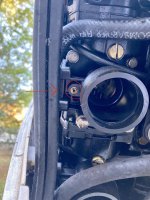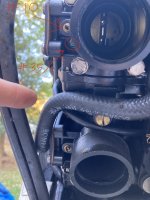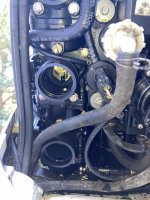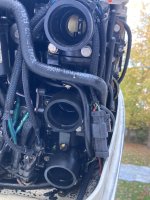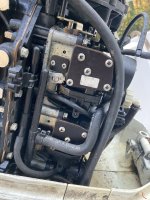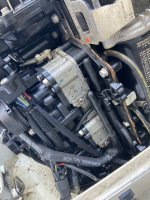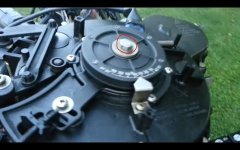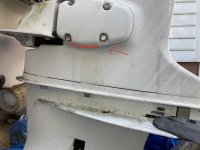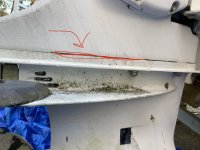It’s my father’s boat and while I’ve been in Uni it’s been neglected for 2 maybe 3 years. Ran great when we last used it but a few things come to mind. It has the famous VRO/OMS system and we were worried about it back even when we used to use it. Any way to tell its working and not over-oiling the system or worse; not injecting any oil? Not sure I want to bank on the alarm system working.
We never used fuel stabilizer so my goal is to flush out as much of the old fuel as I can. Open the carb drain bolts and pump new fuel in from an external tank. I think I might premix the fuel as well just to make sure it’s getting oil; OMS is 19 years old at this point. Also planning on running it first on the external tank. Going to have to clean the boat’s internal tank once we confirm the engine is fine.
Should I be worrying about clogged carb jets? The high flow jet is accessible behind the drain bolt but I will have to disassemble the carbs to look at anything else. My father has an aversion against rebuilding anything carb related because for now he thinks it’s too much of a can of worms. Should I possibly add seafoam to the fuel as well to help clean out the jets?
I’ve already removed the spark plugs and fogged the cylinders and I’m letting it sit for 24 hrs; going to rotate the crank and spray some more (what’s the best way to rotate engine manually?). I plan to crank it without the spark plugs to eject any excess fogging oil; is there a worry of the spark plug holes drawing any foreign matter when manually cranking?
Should I change the fuel filter before I start it up or after? Obviously I’ll at least empty it of any old fuel.
Lastly I’d like to flush the cooling system out; can I removing the thermostats and bolt the housing backup just so I know water is flowing everywhere (with the engine off)? Worried about replacing the old thermostats before startup only to clog the new ones once things get dislodged in there.
We never used fuel stabilizer so my goal is to flush out as much of the old fuel as I can. Open the carb drain bolts and pump new fuel in from an external tank. I think I might premix the fuel as well just to make sure it’s getting oil; OMS is 19 years old at this point. Also planning on running it first on the external tank. Going to have to clean the boat’s internal tank once we confirm the engine is fine.
Should I be worrying about clogged carb jets? The high flow jet is accessible behind the drain bolt but I will have to disassemble the carbs to look at anything else. My father has an aversion against rebuilding anything carb related because for now he thinks it’s too much of a can of worms. Should I possibly add seafoam to the fuel as well to help clean out the jets?
I’ve already removed the spark plugs and fogged the cylinders and I’m letting it sit for 24 hrs; going to rotate the crank and spray some more (what’s the best way to rotate engine manually?). I plan to crank it without the spark plugs to eject any excess fogging oil; is there a worry of the spark plug holes drawing any foreign matter when manually cranking?
Should I change the fuel filter before I start it up or after? Obviously I’ll at least empty it of any old fuel.
Lastly I’d like to flush the cooling system out; can I removing the thermostats and bolt the housing backup just so I know water is flowing everywhere (with the engine off)? Worried about replacing the old thermostats before startup only to clog the new ones once things get dislodged in there.


